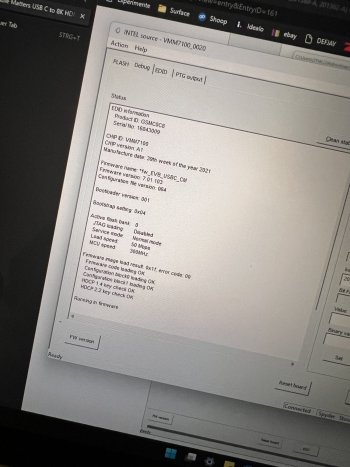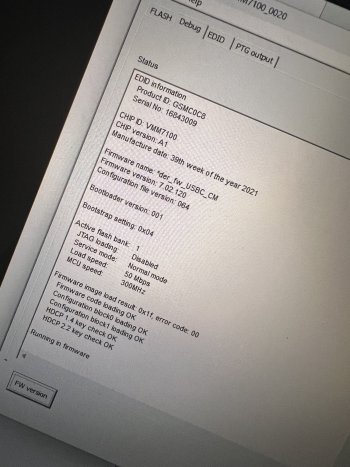Plz all of u that have a Cable Matters Adapter that works or not. Show us the VMM Chip Version in Mac Infos like this:
Mine does not work with VMM7100! Does anyone update also the VMM7100 ?
UPDATE!! Did find a new Firmware for VMM7100 !!:
Note: This firmware update only applies to products with the Synaptics VMM7100 (8K@60Hz) chipset. The previous version of this adapter has the VMM6100 chipset (8K@30Hz). This firmware will not work with the VMM6100 adapters. Please contact us at support@cablematters.com if you are unsure which adapter you have.
This firmware update resolves the following issues:
####
I will Update the Adapter now and will report if is works.
Mine does not work with VMM7100! Does anyone update also the VMM7100 ?
UPDATE!! Did find a new Firmware for VMM7100 !!:
Cable Matters Knowledge Base - Page not found
Knowledge Base for Cable Matters Connectivity Products
kb.cablematters.com
Note: This firmware update only applies to products with the Synaptics VMM7100 (8K@60Hz) chipset. The previous version of this adapter has the VMM6100 chipset (8K@30Hz). This firmware will not work with the VMM6100 adapters. Please contact us at support@cablematters.com if you are unsure which adapter you have.
This firmware update resolves the following issues:
- Doesn't support the DDC/CI function with Dell Monitors
- Only supports up to 2Lane HBR3 at the upstream end on some VMM7100 4Lane HBR3 Products
####
I will Update the Adapter now and will report if is works.
Attachments
Last edited:








